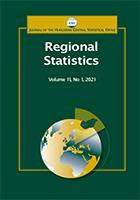Digital skill-based centre-periphery differences in Europe, 2019
Digital skill-based centre-periphery differences in Europe, 2019
Author(s): Balázs Tóth, Gyula NagySubject(s): Social Sciences, Economy, Geography, Regional studies
Published by: Központi Statisztikai Hivatal
Keywords: digital skill; centre–periphery; uneven development; inequality; digitalisation
Summary/Abstract: Digitalisation affects contemporary society in many respects: the economy, work, consumption, education, and even personal relationships. However, it should not be forgotten that not everyone has access to the virtual space, and that those who have are not equal in their abilities to utilise it. As a product and a means of production, in capitalism, the virtual space has an inherent function to reproduce uneven relations and deepen existing interdependencies. This study aims to present already-existing inequalities through an analysis of the socio-digital structure of European countries. First, the Central and Eastern European (CEE) region is identified as a periphery that shows further inner dividedness in terms of digital skills. Second, the study applies country-level economic and digital performance data on European Union (GDP). Third, factor analysis is conducted on all the indicators to identify those that behave similarly. Fourth, cluster analysis is performed on the same indicators to create country-based centre-periphery division alternatives. Based on the data, the most important dividing factor is household income, which is also an entry threshold for ICT use. Meanwhile, further digital-skill development depends more on a country’s economic performance, measured by the (GDP). Despite low education and income requirements, many people remain excluded or cannot utilise the digital sphere, which is a key part of contemporary society, resulting in inequalities.
Journal: Regional Statistics
- Issue Year: 13/2023
- Issue No: 04
- Page Range: 583-616
- Page Count: 34
- Language: English

